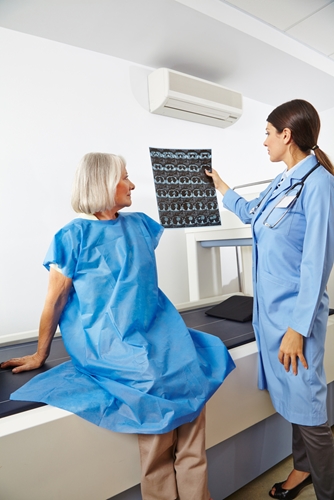Medical imaging practices have conducted exams using similar equipment for decades, but the modern era has ushered in updated machines capable of producing higher quality results. As radiology makes the transition from 2-D to 3-D, enhanced clinical services and diagnoses are sure to follow.
Applied Radiology explained that radiologists are on the hunt for advanced visualization that improves their ability to accurately read diagnostic reports. For example, mammograms can be effective but often fail to discern between healthy breast tissue and possible growths. As a result, more physicians have begun adopting digital tomosynthesis platforms that provide them with in-depth, 3-D images of the entire breast. This new level of sophistication has helped drive the health care industry away from traditional 2-D equipment.
Innovation has made advanced visualization more practical in the clinical setting, leading to tools that are user-friendly and can easily reconstruct 3-D images. The technology is not far off from what movie studios and video game developers use to render entire worlds and characters from scratch.
As workstations that have limited processing power and complicated user interfaces are phased out of the health care facility, 3-D imaging becomes more prevalent. The advent of cloud computing has given way to remote access to PACS and other useful medical databases, allowing doctors to review and interact with clinical data in real-time. All meaningful information can be integrated into PACS and electronic health records that follow patients to every facility they visit during the continuum of care.
Despite the advantages of 3-D imaging and the advanced visualization services it provides, the innovation faces roadblocks put up by the U.S. Food and Drug Administration.
FDA playing catch up
The Washington Post reported that the shift from 2-D to 3-D has the FDA scrambling to keep up with new applications. Recently, the federal agency released a consumer update on tomosynthesis to coincide with the beginning of Breast Cancer Awareness month. Although 3-D screening equipment has been around for many years, the FDA has been struggling to follow along with the industry-wide transition.
"Other industries are developing displays and fast computers that can be incorporated or utilized in [medical] images," said Mary Pastel, deputy director for radiological health at the FDA, quoted by The Washington Post. "The challenge for the FDA and industry is, at what point are those kinds of devices effective enough for the unique challenge of displaying medical images? Certainly Pixar images in movies can be moving toward quite realistic rendering, but there are substantial challenges displaying medical images with a very high pixel [rate]."
To date, the FDA has only approved two tomosynthesis systems for sale in the U.S., as developers must undergo a series of clinical trials that provide convincing evidence that the 3-D system can detect more cases of early-stage cancer than their 2-D counterparts. This thorough process is critical, as it can help protect patients from equipment that might use harmful levels of radiation doses to achieve its comprehensive results.
As the FDA reworks its approval process, the coming decade could see more 3-D imaging platforms hit the market than ever before, benefiting both doctors and patients in the long run.
Contact Viztek for more information.
Ronny Bachrach
Latest posts by Ronny Bachrach (see all)
- Konica Minolta Debuts First-of-Its-Kind Digital U-Arm System at AHRA - July 27, 2016
- Researchers Detect Signs Of Stroke Risk Using MRI - June 27, 2016
- Imaging Biz: Q&A with David S. Channin MD: How to Make PACS Patient Centered - June 22, 2016










